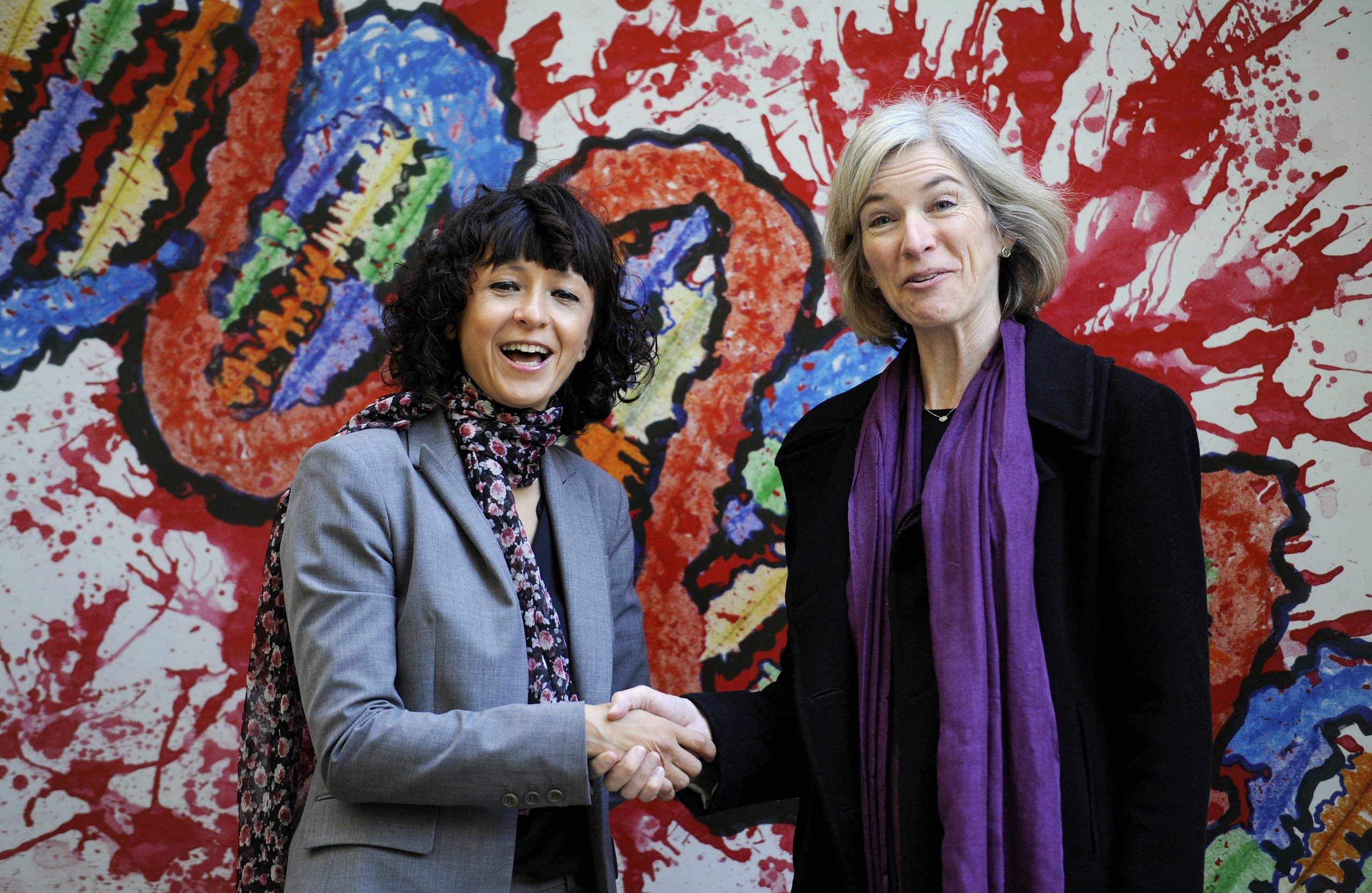
Madeline Sponsler, FISM News
[elfsight_social_share_buttons id=”1″]
Two scientists won the 2020 Nobel Prize in Chemistry on Wednesday for creating genetic ‘scissors’ that can rewrite the code of life, contributing to new cancer therapies and holding out the prospect of curing hereditary diseases.
Emmanuelle Charpentier, who is French, and American Jennifer Doudna share the 10 million Swedish crown ($1.1 million) prize for developing the CRISPR/Cas9 tool to edit the DNA of animals, plants and microorganisms with precision.
“The ability to cut the DNA where you want has revolutionized the life sciences,” Pernilla Wittung Stafshede of the Swedish Academy of Sciences told an award ceremony.
Charpentier, 51, and Doudna, 56, become the sixth and seventh women to win a Nobel for chemistry, joining Marie Curie, who won in 1911, and more recently, Frances Arnold, in 2018.
It is the first time since 1964, when Britain’s Dorothy Crowfoot Hodgkin alone won the award, that no men are among the chemistry prize winners.
Charpentier, of the Max Planck Unit for the Science of Pathogens, told journalists in Berlin she was “extremely emotional and extremely moved” by the award, which came as a complete surprise even though she had been tipped as contender.
The first Nobel won by two women showed how “science becomes more modern and develops more female leaders”, she said after setting down a glass of wine to pose for the cameras alongside a bust of Planck, the 1918 Physics Nobel laureate.
The path from discovery to prize has taken less than a decade – a relatively short period by Nobel standards.
And, although CRISPR had been tipped to win the Chemistry prize, there has also been concern that the technology conferred God-like powers on scientists and could be misused, for example, to create ‘designer babies’.
“The enormous power of this technology means that we need to use it with great care,” said Claes Gustafsson, chair of the Nobel Committee for Chemistry.
“But it is equally clear that this is a technology, a method that will provide humankind with great opportunities.”
Charpentier’s breakthrough came in the study of Streptococcus pyogenes, an ancient bacterium that can cause tonsilitis and potentially fatal sepsis in people, when she found that a previously unknown molecule in its immune system could ‘cleave’ DNA.
The pair succeeded in recreating the bacteria’s genetic scissors in a test tube and simplifying the molecular structure of the tool to make it easier to use.
They published their findings in June 2012, seven months before the Broad Institute group which, however, successfully filed a series of U.S. patent applications and says its gene editing technology is better.
Doudna said she was “deeply grateful” for the acknowledgment from Lander, but added: “How will this affect the ongoing patent dispute? It probably won’t.”
DNA is a string of some 6 billion ‘letters’ spelling out instructions that tell a cell what to do. The beauty of CRISPR/Cas9 is that it can not only snip DNA at the right spot, but also repair the join so that errors do not creep in.
Today CRISPR/Cas9 is a common tool in biochemistry and molecular biology labs – used to make crops more resistent to drought or develop novel treatments of hereditary diseases such as sickle-cell anaemia.
“We can now easily edit genomes as desired, something that before was hard, even impossible,” said Wittung Stafshede.
Sourced from Reuters
